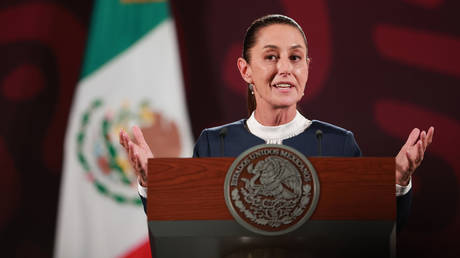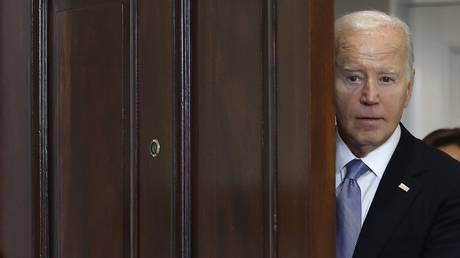ARTICLE AD BOX
THIS was the horror moment an Air France plane packed with 136 passengers crashed in front of screaming crowds.
Shocking footage showed the Airbus A320’s first flight – skimming low over the runway before skimming over trees and crashing in a fireball.
 Air France flight 296Q was carrying 136 passengers when it crashed in a failed airshow
Air France flight 296Q was carrying 136 passengers when it crashed in a failed airshow The aircraft fails to land and flew past the dangerously short runway at Mulhouse-Habsheim Airport
The aircraft fails to land and flew past the dangerously short runway at Mulhouse-Habsheim Airport It then crashed in a fireball in front of spectators
It then crashed in a fireball in front of spectators Medium
MediumIt has been exactly 36 years since the disaster that marked sombre chapter in aviation history.
On June 26, 1988, crowds gathered at Mulhouse-Habsheim Airport in France for the arrival of flight of Air France Flight 296Q – with the state-of-the-art Airbus A320-111.
The groundbreaking aircraft was the first commercial plane equipped with a fly-by-wire control system – which promised better safety and efficiency.
The plan was to perform a 100ft low-altitude flyover to show off the plane’s advanced systems.
Habsheim’s Airport had a single runway of just 1,120m – meaning the plane flew in from elsewhere.
The Air France flight took off from Paris CDG Airport before landing at Basel/Mulhouse Airport where a press conference was held before passengers boarded.
Crowds were in awe as the plane took off – carrying mostly journalists and raffle competition winners onboard the inaugural flight.
It was flown by Captain Michel Asseline, a seasoned pilot with more than 10,000 flight hours, and his first officer, Pierre Mazières.
The pair seemed confident after training for countless hours on the new aircraft.
But as the plane approached the runway, it descended lower than intended.
Instead of levelling off at 100ft, the Airbus came down to a dangerous 30ft.
The engines were at idle thrust – contributing to the plane’s rapid continued descent.
Captain Asseline tried to increase thrust and pull the aircraft up – but it was too late.
The plane skimmed the treetops at the end of the runway, with its undercarriage and wings tearing through the forest canopy.
Within moments, the aircraft crashed into the woods and erupted into a colossal fireball.
Miraculously, all 136 passengers survived the initial impact, but three later died of smoke inhalation from the fire.
 Getty
Getty Bureau of Aircraft Accidents Archives
Bureau of Aircraft Accidents Archives Tail Strike
Tail Strike EPA
EPAAn investigation was launched to determine the cause of the tragedy.
The probe examined the aircraft’s systems, pilot actions, and possible miscommunications.
It was found that the combination of a low altitude, idle engine thrust, and delayed response to increase power contributed to the disaster.
The pilots’ reliance on the new technology, and perhaps an overconfidence in its capabilities, also played a role in the tragic outcome, investigators found.
Five people were then found guilty of involuntary manslaughter.
Captain Asseline claimed he and Mazières had busy weekends and were not given the flight plan until the morning of the flight.
They claimed they also did not receive any airfield maps or details of the airfield’s layout.
Asseline denied he had left the go-around too late, claiming that the aircraft’s fly-by-wire computer prohibited him from applying thrust and pulling up.
He also claimed that the plane’s black box had been tampered with, leaving four seconds missing.
 Former Air France pilots Pierre Mazieres (L) and Michel Asseline (R) seen in court, November 22, prior to the start of a month-long trial
Former Air France pilots Pierre Mazieres (L) and Michel Asseline (R) seen in court, November 22, prior to the start of a month-long trial Getty
Getty EPA
EPAAsseline, the first officer, two Air France personnel, and the president of the flying club were convicted of involuntary manslaughter.
Captain Asseline was the only one found guilty and sentenced to jail time.
He appealed but lost, and was sentenced to 10 months in prison followed by ten months on probation.
The investigation included several recommendations – such as banning all passengers from demonstration flights and providing flight crews with maps and an accurate survey of airfields.
The disaster became the hot topic of documentaries, such as Canadian series Mayday.
The popular show covered Flight 296Q, featuring a detailed reconstruction and analysis of the event, including interviews with experts and investigators.
CONSPIRACY THEORIES
Some conspiracy theories claim that the tragedy was not an accident but an act of sabotage or even an intentional crash to discredit Airbus or the A320 programme.
Supporters of this theory pointed to the rapid rise of Airbus as a competitor to Boeing.
They speculated that there might have been foul play involved to undermine the credibility of the new aircraft.
But there has been no substantial evidence to support these claims.
Another theory suggested that there was a cover-up by either Airbus or Air France to hide the true cause of the crash.
Some believed that critical evidence was withheld or manipulated to protect the reputation of the A320 and its fly-by-wire technology.
This included allegations that the flight data recorder – also known as the black box – had been tampered with.
Investigations showed some inconsistencies, but officials maintained these were due to technical issues rather than intentional tampering.
There were also theories focusing on possible technical malfunctions of the A320’s systems.
Some speculated there was a problem with the aircraft’s altitude readings or its engine control systems.
The investigation did consider these possibilities, but ultimately concluded the systems were functioning as designed and that the primary issue was the low altitude and delayed thrust application.
Another theory suggested potential miscommunication between the flight crew and the ground control or within the cockpit itself.
Some believe there may have been a misunderstanding of the flight profile or misinterpretation of instructions, leading to the dangerously low pass.
The theory highlighted the importance of clear communication and proper briefing for demonstration flights.
.png)
 5 months ago
3
5 months ago
3








 English (US)
English (US)